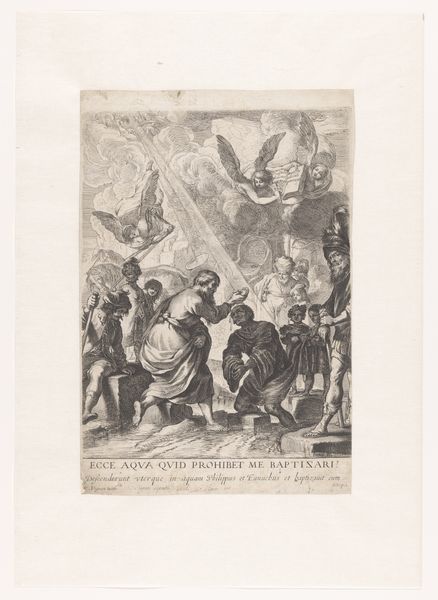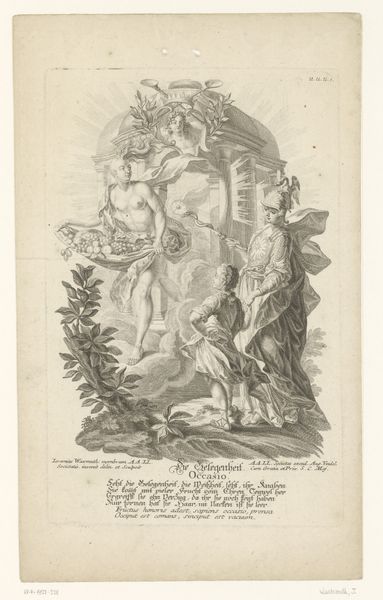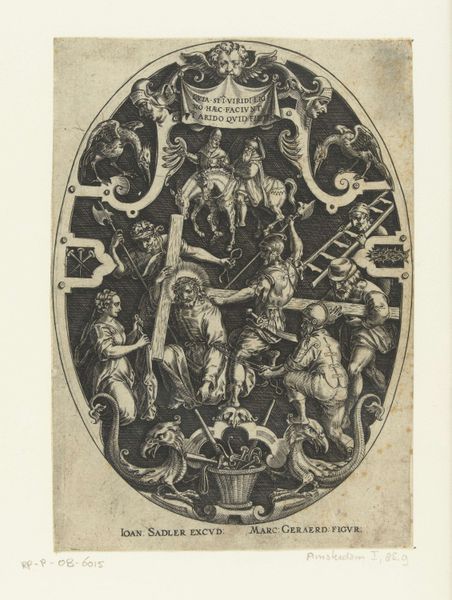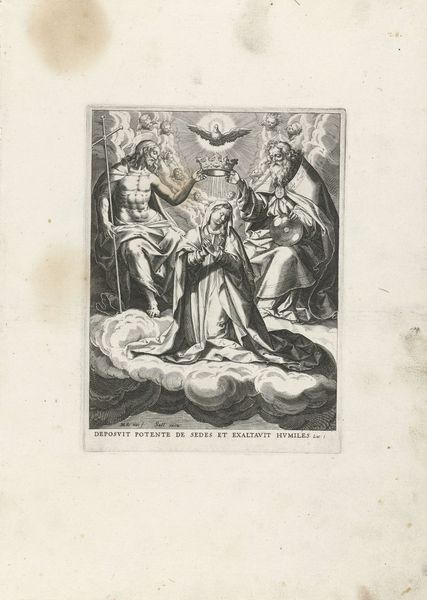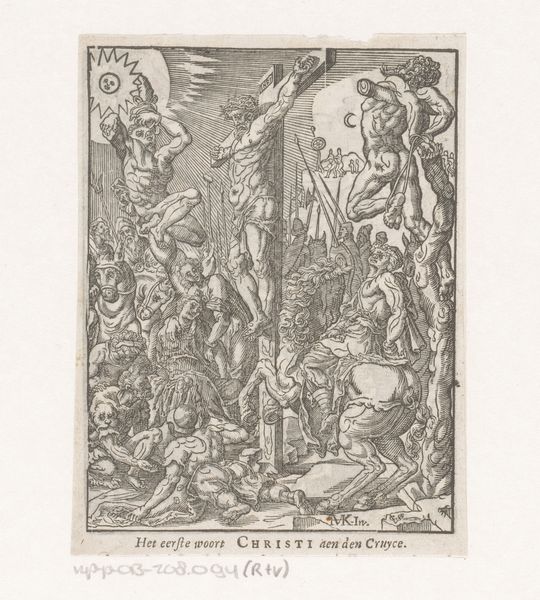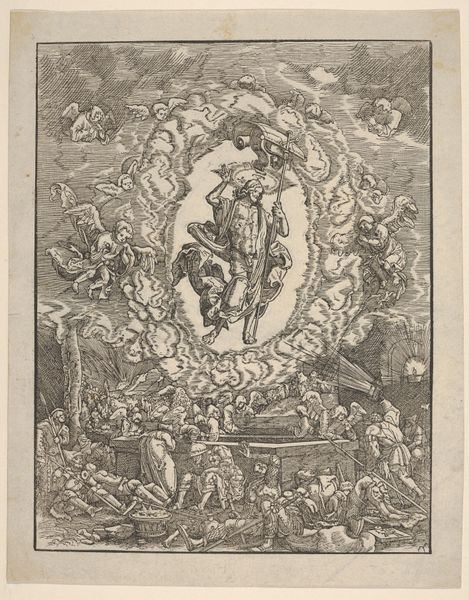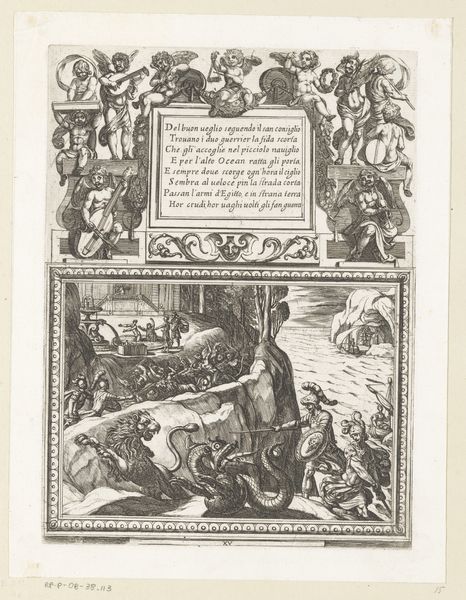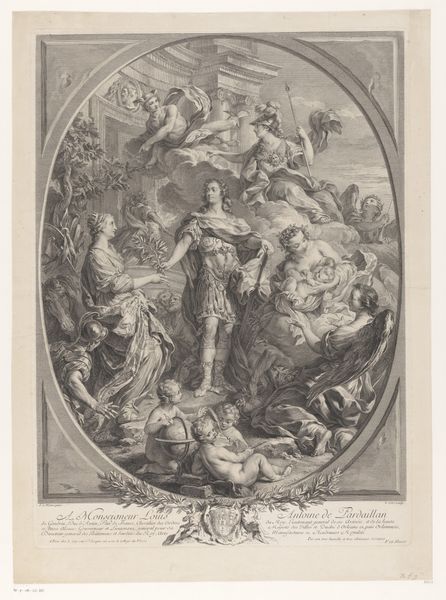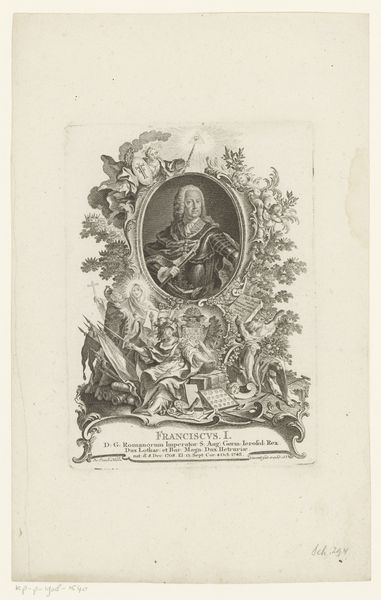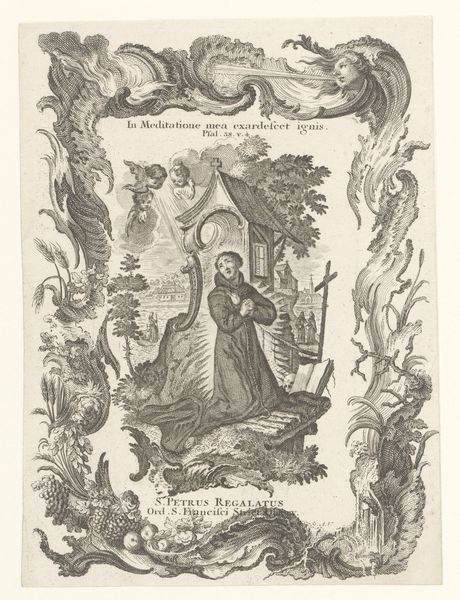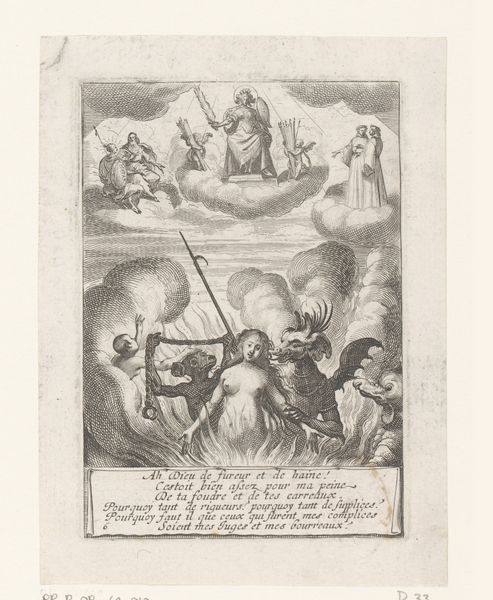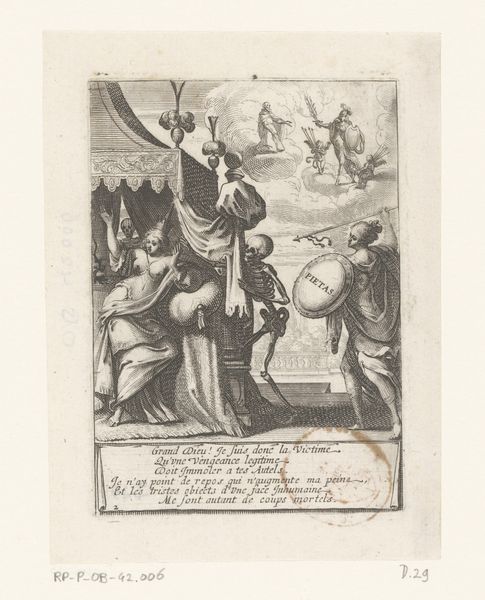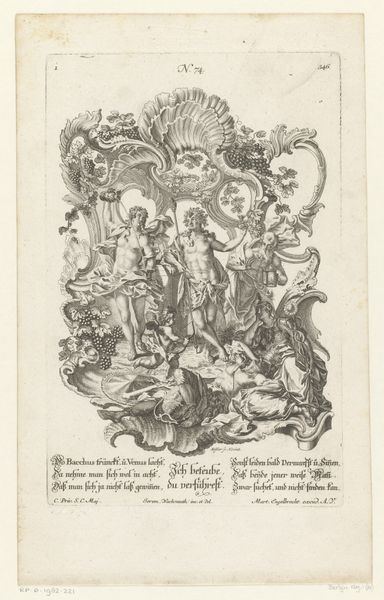
print, engraving
#
portrait
#
baroque
# print
#
history-painting
#
engraving
Dimensions: height 130 mm, width 85 mm
Copyright: Rijks Museum: Open Domain
Curator: Today we are looking at a Baroque print entitled “Heilige Peregrine Laziosi,” created by Johann Christoph Winkler, around 1717 to 1770. Editor: My immediate reaction is that this engraving feels densely packed, almost overwhelmed with symbolic imagery. The central figure looks calm, in contrast to the busyness surrounding him. Curator: Exactly. Peregrine Laziosi, as a saint, is of course a powerful symbolic figure in the church's narrative. Note the prominence given to Christ on the Cross at the top right, contrasted with Saint Peregrine and allusions to his personal story below him. Editor: Structurally, the central portrait dominates. The saint's composed posture is framed by this chaotic collection of religious objects and the narratives, creating a tension between the stillness of faith and the surrounding world. The textures are impressive; observe the hatching and cross-hatching that create shadows and depth, adding a tangible quality to the ethereal subjects represented. Curator: Yes, Winkler uses traditional symbolic shorthand. Each object carries profound meaning within a visual tradition – the instruments of Christ’s Passion, the smaller vignettes that show various episodes from the saint’s life. In a way, the image synthesizes collective memory and a shared visual language. Editor: Yet, despite the visual weight of the symbols and narratives, the composition leads the eye back to Peregrine. There’s a delicate balance struck here—the artist doesn't let the smaller surrounding images overwhelm the core subject. Curator: The positioning is so important – the upper and lower registers, the deliberate framing devices – they’re all orchestrating the viewer’s experience of this particular historical figure. Saint Peregrine's figure almost seems like an unveiling. Editor: Thinking about Winkler's choices in rendering the scene adds so much, doesn't it? The precision in capturing the details of Peregrine's robes, versus how he models the landscape—everything plays a role in our understanding and connection to the subject. Curator: Indeed, in engaging with such prints we have a chance to consider not only the specific story of Peregrine Laziosi but also the endurance and evolution of visual motifs and what they continue to communicate across centuries. Editor: Agreed, diving into the formal choices provides access to wider understandings about religion and Baroque aesthetics that shape and are shaped by artists and their times.
Comments
No comments
Be the first to comment and join the conversation on the ultimate creative platform.
